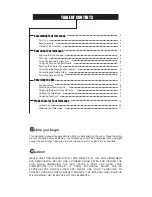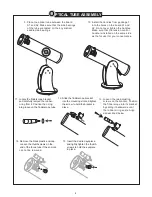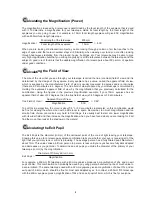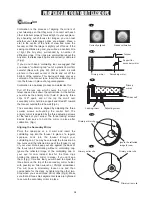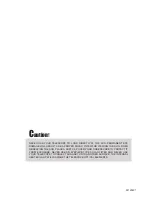
9
OBSERVING THE SKY
Sky conditions are usually defined by two atmospheric characteristics, seeing, or the steadiness of the air,
and transparency, light scattering due to the amount of water vapour and particulate material in the air.
When you observe the Moon and the planets, and they appear as though water is running over them, you
probably have bad "seeing" because you are observing through turbulent air. In conditions of good "seeing",
the stars appear steady, without twinkling, when you look at them with unassisted eyes (without a
telescope). Ideal "transparency" is when the sky is inky black and the air is unpolluted.
Travel to the best site that is reasonably accessible. It should be away from city lights, and upwind from any
source of air pollution. Always choose as high an elevation as possible; this will get you above some of the
lights and pollution and will ensure that you aren't in any ground fog. Sometimes low fog banks help to block
light pollution if you get above them. Try to have a dark, unobstructed view of the horizon, especially the
southern horizon if you are in the Northern Hemisphere and vice versa. However, remember that the
darkest sky is usually at the "Zenith", directly above your head. It is the shortest path through the
atmosphere. Do not try to observe any object when the light path passes near any protrusion on the ground.
Even extremely light winds can cause major air turbulence as they flow over the top of a building or wall. If
you try to observe on any structure, or even a sidewalk, movements you make may cause the telescope to
vibrate. Pavement and concrete can also radiate stored heat which will affect observing.
Observing through a window is not recommended because the window glass will distort images
considerably. And an open window can be even worse, because warmer indoor air will escape out the
window, causing turbulence which also affects images. Astronomy is an outdoor activity.
The best conditions will have still air, and obviously, a clear view of the sky. It is not necessary that the sky be
cloud-free. Often broken cloud conditions provide excellent seeing. Do not view immediately after sunset.
After the sun goes down, the Earth is still cooling, causing air turbulence. As the night goes on, not only will
seeing improve, but air pollution and ground lights will often diminish. Some of the best observing time is
often in the early morning hours. Objects are best observed as they cross the meridian, which is an imaginary
line that runs through the Zenith, due North-South. This is the point at which objects reach their highest points
in the sky. Observing at this time reduces bad atmospheric effects. When observing near the horizon, you
look through lots of atmosphere, complete with turbulence, dust particles and increased light pollution.
Telescopes require at least 10 to 30 minutes to cool down to outside air temperature. This may take longer
if there is a big difference between the temperature of the telescope and the outside air. This minimizes
heat wave distortion inside telescope tube (tube currents). Allow a longer cooling time for larger optics. If
you are using an equatorial mount, use this time for polar alignment.
Do not expose your eyes to anything except red light for 30 minutes prior to observing. This allows your
pupils to expand to their maximum diameter and build up the levels of optical pigments, which are rapidly
lost if exposed to bright light. It is important to observe with both eyes open. This avoids fatigue at the
eyepiece. If you find this too distracting, cover the non-used eye with your hand or an eye patch. Use
averted vision on faint objects: The center of your eye is the least sensitive to low light levels. When viewing
a faint object, don't look directly at it. Instead, look slightly to the side, and the object will appear brighter.
S
ky conditions
S
electing an observing site
C
hoosing the best time to observe
C
ooling the telescope
A
dapting your eyes


